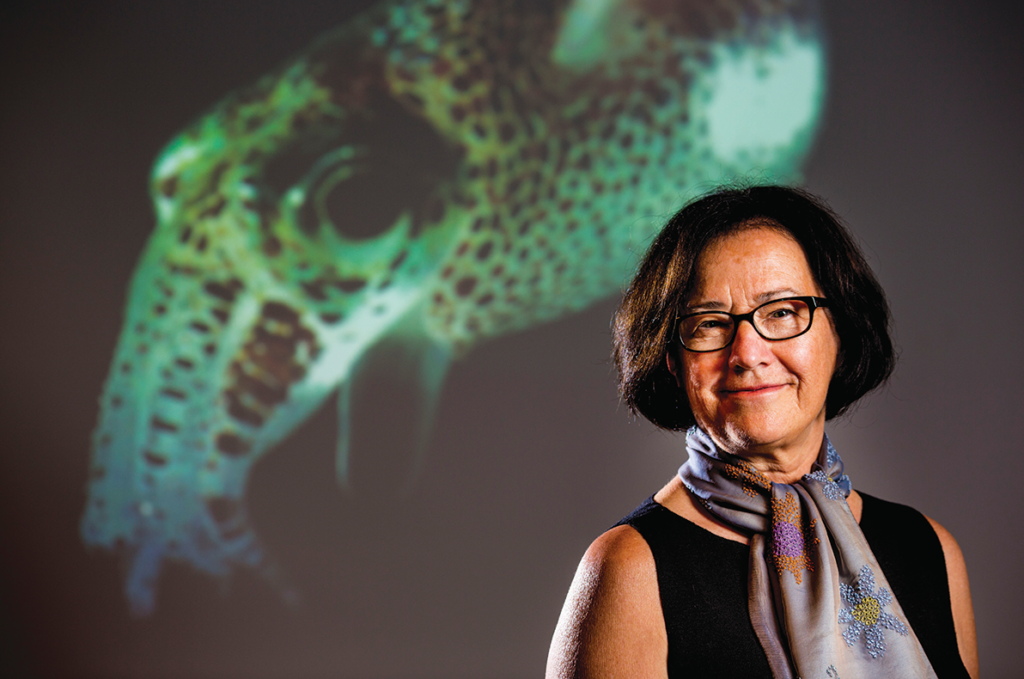A World Leader in the Study of the Earth’s Microbiome
Through advances in molecular technology, researchers now know that microbes occur across all of Earth’s major habitats, and that they are important for the health of essentially all living things—including humans and other animals.
In response to this newfound recognition of the importance of microbes, the White House Office on Science and Technology endorsed the National Microbiome Initiative (NMI) in 2016 and its goal of understanding the structure and function of the Earth’s microbial partners—and the University of Hawai‘i at Mānoa (UH Mānoa) is poised to take a leading role in the development of this effort.
Across the UH Mānoa campus, over a dozen recent faculty hires have been made in this important research field that include junior and senior tenure-track appointments in the School of Ocean and Earth Science and Technology, College of Natural Sciences, College of Tropical Agriculture and Human Resources, College of Engineering and the John A. Burns School of Medicine. These new faculty join a distinguished group of leaders in the field of environmental microbiology. Together, this group of internationally recognized individuals contributes significantly to emerging global directions in the field of biological research as well as in biology education.
“UH Mānoa is a powerhouse in the realm of microbiome research,” said Michael Bruno, UH Mānoa Vice Chancellor for Research. “There are few, if any, universities with the number of world leaders in this domain. UH Mānoa has three members of the National Academy of Sciences (NAS) who specialize in this field.”
Microbes are, by definition, those life forms that we cannot see with the naked eye, including such entities as viruses, bacteria and fungi. They can exist as independent organisms in the water, soil, air, and the deep subsurface of the Earth, or they can occur in intimate symbiotic alliances with animals and plants. Microbes have shaped the evolution of the biosphere, driving such major milestones as the diversification of the animals and the colonization of the land by plants.
One major focus of study at UH Mānoa is the exploration of how evolving in a microbe-rich environment has influenced the form and function of animals, including humans. In this field, UH Mānoa researchers are studying a broad array of topics, including how microbes drove evolution at the dawn of animal radiation, hundreds of millions of years ago; how they influence the structure of the reef communities of the oceans today; and the role that microbes play both in maintenance of human health and in the onset of diseases, such as cancer and diabetes.
In each and every one of the study areas mentioned above, UH scientists seek research subjects that promise to provide insight into how a given biological process works. Consider the research being done with the model symbiosis between the Hawaiian bobtail squid and a bioluminescent bacterial species at the UH Mānoa’s Pacific Biosciences Research Center (PBRC). This squid, a night-active predator in the shallow waters of the Hawaiian archipelago, uses bioluminescence produced by its microbial partner to camouflage against moonlight and starlight, so that it is not seen by predators. Research work on this mutually beneficial symbiosis is being carried out by a group of about a dozen biologists at UH’s Kewalo Marine Laboratory.
The squid-bacteria symbiosis has provided, and continues to provide, insight into the basic rules of the phenomenon of host-microbe interaction. Its power lies in its basic features: (i) it is simple, comprising one host and a population of one microbial species; (ii) it lends itself to experimental manipulation; and (iii) interactions between a live animal and its bacterial partner can be observed directly by microscopy. In addition, the bacterial symbionts are acquired anew each generation, similar to the way in which humans obtain their microbial partners. Also, the vibrios take up permanent residence along the surfaces of the animal’s tissues, which is the most common way in which microbes associate with their animal hosts. For example, the human intestine, skin and respiratory system, each have essential microbiomes on their surfaces. The major difference between the squid and humans is that, in humans, the interaction is very complex, involving dozens to hundreds of different microbial types on any given surface, and these surfaces are often inaccessible to observation. As such, unlike the squid-vibrio system, in the human condition, it is very difficult to decipher what any given type of microbe is doing, and nearly impossible to observe them in a living specimen. Experimental analyses of the squid-vibrio system over the last 20 years has provided the biomedical community with insights into how the right bacterial partners are chosen each generation, i.e., those that will lead to health throughout life, and then the steps that are required for a persistent partnership to flourish.
The University of Hawai‘i at Mānoa is in a position to provide leadership for the NMI and the squid-bacteria system provides only a taste of the richness of symbiosis research on the Earth’s microbiomes that is being conducted at on campus. By harnessing it’s talent. UH Mānoa will be able to further provide research contributions at the very highest level of quality to this exciting biological frontier.
“Major challenges facing mankind, including sustainability of the environment, human health, and energy and food production, have the microbial world as a principal driving force in both the creation of the problems as well as strategies for the development of solutions,” said Margaret McFall-Ngai, NAS member and director of PBRC. “We have a great opportunity here in Hawai‘i to participate as pioneers in the research of our microbial biosphere.”

